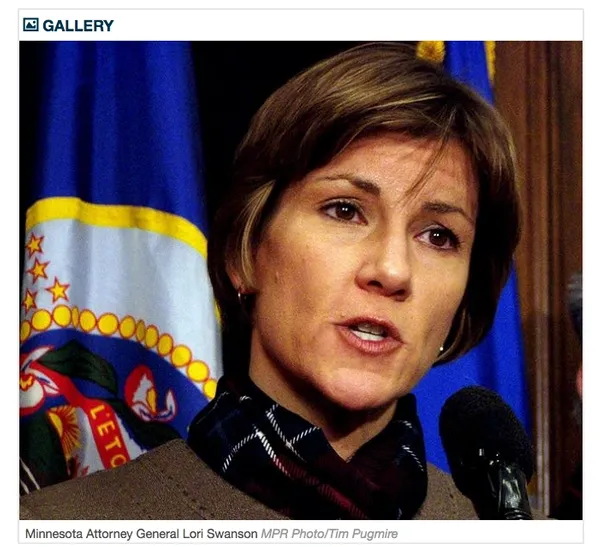at 612-315-3037 or
www.swansonhatch.com

The state budget for Minnesota faced a $5 billion shortfall at the beginning of the 2011 legislative session. In 2011, the Republicans controlled the state legislature and the Governor was a Democrat. The Minnesota Constitution requires that the legislature and Governor adopt a budget by July 1 of the biennium.
At the beginning of the 2011 legislative session, the Governor proposed a budget of $37 billion. A $37 budget would have necessitated a 10% cut in most state agencies and require a tax increase of approximately $5 billion. The legislature, controlled by Republicans, rejected the idea of a tax increase. By the end of the legislative session, in May the Governor proposed a $35.8 billion budget. The legislature responded by passing a budget which totaled approximately $32 billion dollars and adjourned. The Governor then vetoed the budget bills.
The governor declined to call a special session until he and the legislative leaders worked out an agreement. The parties continued to be at an impasse.
In June Swanson went to court and filed two petitions. One petition was to fund core functions of the judicial branch. The other petition was to fund certain core functions of the executive branch. Both the Governor and the legislative leadership, locked in a showdown, opposed the two petitions. They both thought that a government shutdown would bring public pressure on the opposite political party. The Governor and the leadership retained lawyers to oppose Swanson.
In court, Swanson conceded that the Constitution required a budget to be enacted by the legislature. She also argued, however, that the Constitution also guaranteed certain rights to its citizens. For instance, the Constitution required that no one’s liberty or property may be taken without due process of law. She argued that this means the courts must remain open so that they can administer due process as it relates to arrests and prisoners. Otherwise, Minnesota would have a “catch and release” system for people arrested with crimes, since there would be no court system to grant probable cause hearings.
The shutdown raised many other issues? Who would feed the prisoners if the government shut down? How could teachers and nurses and doctors get licensed? How would people get a driver’s license? At one point a quadriplegic individual was trapped on the third floor of a building without a bathroom because the elevator, which was repaired, need to be certified by a state elevator inspector before it could move the patient. Swanson got the patient moved.
Swanson also argued that state government had many obligations under federal law and that, under the Supremacy Clause, these obligations could not be ignored, notwithstanding a shutdown.
The budget shutdown litigation was quite intense, involving many different hearings. In the end, the “core functions” that Swanson argued were mandated by the Constitution continued to operate.
Swanson’s petitions were opposed by many legislators and the Governor, who as noted above thought the petitions took pressure off the parties to get the budget impasse resolved. On July 8, 2011, eight days into the government shutdown, the legislative leadership appealed the court’s orders to the Minnesota Supreme Court.
On July 19, 2011, 19 days into the shutdown, the legislature and Governor came to terms and enacted new budget bills. The appropriation bills authorized funding going back to July 1, 2018.
On August 30, 2011, the Minnesota Supreme Court asked the parties to show cause why the matter should not be dismissed as being moot. Swanson took the position that the Court should dismiss the case because the budget bills cover all expenses encumbered during the shutdown. She also pointed out that, if the legislature wanted to prevent the courts from hearing such petitions, it could, through the political process, adopt restrictions on such activity.
The court agreed with Swanson’s arguments. Justice Page, seen at the time as a more liberal Justice, dissented. He was wary of the judiciary being used as a referee in the fight between the two political branches of government.
Limmer v. Swanson, 806 N.W. 2d 838 (2011)
Opinion:
https://scholar.google.com/scholar_case?case=8537902845079026539&q=lori+...
Petition: Download Below.
Memorandum in Support: Download Below.
Findings, Conclusions, Order: Download Below.
Findings, Conclusions and Order: Download Below.
In 2007 Swanson opposed a similar appeal by legislators as it related to the 2005 partial government shutdown. In that case, Swanson emphasized that the legislature adopted a budget on July 14, 2005 which retroactively funded all obligations going back to July 1, 2005. Under these circumstances, argued Swanson, the case was non-justiciable because the legislature’s action made the issue moot.
Swiggum v Hanson, 732 N.W. 2d/ 312 (2007)